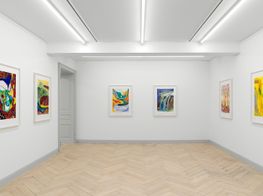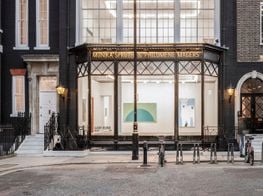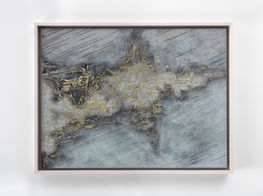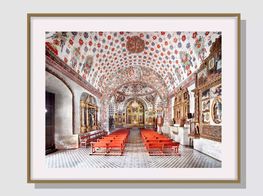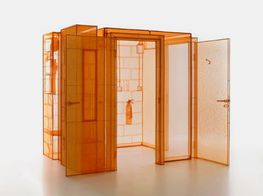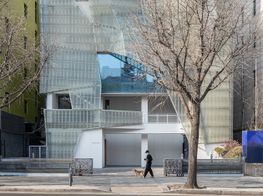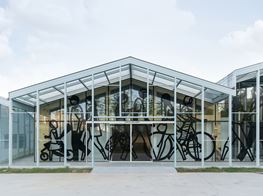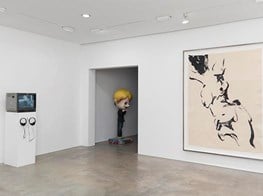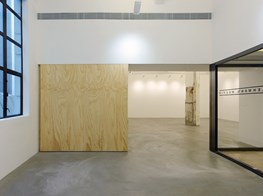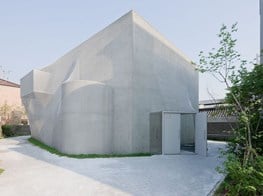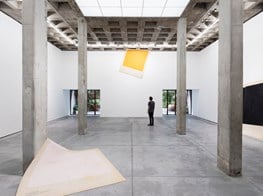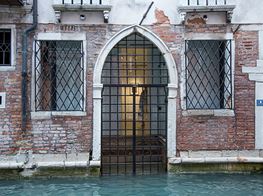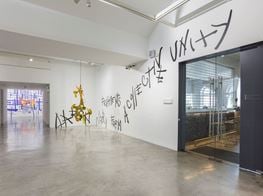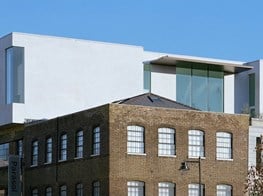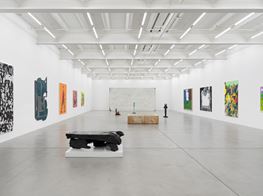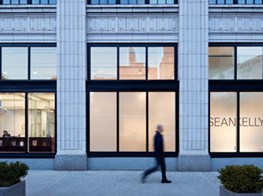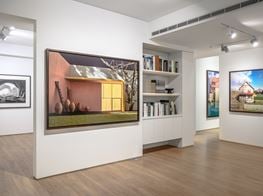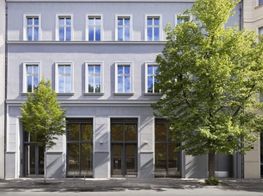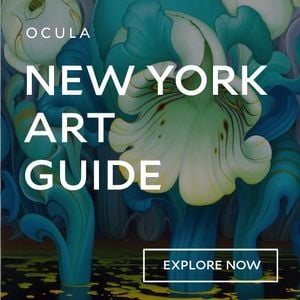Phong Bui
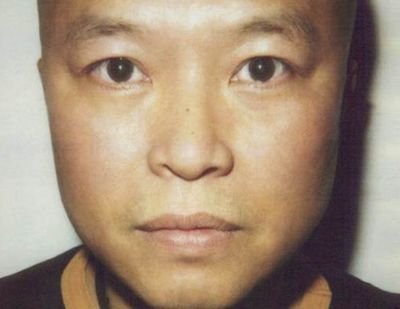
In March 2014, a show opened at Paul Kasmin Gallery titled Alexander the Great: The Iolas Gallery 1955–1987
, which celebrated the legendary gallerist Alexander Iolas, who was among the first to introduce American audiences to Surrealism and who gave Andy Warhol his first gallery exhibition (and, coincidentally, also his last in 1987). The exhibition struck a chord with artist, writer, and independent curator, Phong Bui—the Vietnamese-born and New York-based co-founder, editor-in-chief, and publisher of the monthly journal the Brooklyn Rail and publishing press Rail Editions. In the space of only a few months, Bui put together an exhibition entitiled Bloodflames Revisited, that responded directly to the legacy of Iolas.
Bloodflames Revisited which will run at Paul Kasmin Gallery until August 15, reconsiders an exhibition Iolas staged in March 1947 while the director at Hugo Gallery, where he worked after first arriving in New York City in 1945. Iolas' original exhibition was titled Bloodflames, and it was organized by poet and critic Nicolas Calas (Nikos Kalamaris) and designed by Frederick Kiesler, whose unconventional exhibition construction—artworks were projected and tilted at various angles from the gallery’s altered, curved walls—presented pieces by artists including Arshile Gorky, Matta, Isamu Noguchi, and Jean-Claude Reynal among others.
In Phong Bui’s revisit, a new roster of artists—from Lynda Benglis to Lee Bul, Superflex, and Tunga—set the scene for an integrated exhibition designed to build “a field of vision in which the relationship between the works of art and the spectators is integrated with greater amplification.” With the dominant colour scheme of yellow and red—paying homage to the seat colours of New York City’s subway trains—the exhibition unfolds over both of Paul Kasmin’s New York spaces. Unexpectedly, hay covers the floor and boldly-coloured red walkways zig zag through the rooms where art work has been hung on bright yellow walls. In this interview, Phong Bui discusses the thinking behind the exhibition, and the ideas and histories that fed into its conception.
You’re an artist, writer and curator, who is also involved in publishing and curatorial projects. You are also an active board member of the Miami Rail, the Third Rail in the Twin Cities, not to mention the Marie Walsh Sharpe Art Foundation, the Louis Comfort Tiffany Foundation, and the International Association of Art Critics United States (AICA-USA). You also currently teach at the School of Visual Art’s MFA Art Criticism and Writing, and MFA Photography, Video, and Related Media Programs. In terms of how you have been actively engaging in the expansive field of visual culture, I’m curious as to how you view art today.
We live in a really interesting and exciting time, but it’s a frightening time as well, if you were to consider the myth of the Tower of Babel—the story goes that once men used to speak one language until they built a tower so high into the sky that God became angry and hence split them up into different languages so they could no longer communicate with each other. The world is coming close to speaking one language one day soon. I wonder what will happen next!
How do you see this unfolding in the context of the art world, this coming together as one? Many might call this process homogenization.
It is too simple to put it that way. To me, visual culture has become more dominant for a reason. As technology increases its presence in the world, we are seeing an emphatic removal of any kind of personal space for reflection or solitude. I think visual culture offers this space to the viewer, in which he or she can slow down in their constancy of technological distractions in order to relate to a work of art or image that is the product of the mind and hand. The visual has also become so democratically accessible that it even appeals to people who aren’t expected to possess any kind of historical knowledge to mediate or appreciate this experience.
This relates to the exhibition you organized with Rail Curatorial Projects at Paul Kasmin Gallery, Bloodflames Revisited, in that you are bringing a history from the past into the present without being nostalgic.
Why would any of us have the urge to replicate something completely? I thought I’d re-apply the concept with fresh insight, generated by works of contemporary artists. I should add that the key of the show is to be playful and inventive. For example, the colours of the walls, which are painted bumble bee yellow, and the elevated ramp which is flame red, came directly from seats I saw on the N train as I was on my way to meet Paul (Kasmin) for lunch last April. Then I had to find works that referenced, either formally or through content, red as a colour, like Lynda Benglis’s sculpture D’Arrest (2009) which is a tinted polyurethane and far different from Roxy Paine’s delicate red neon piece Incident/Resurrection (2013), yet serious as an image. Similarly, Alex Katz’s painting of a Red Rose may relate to Will Ryman’s three-dimensional version of the same subject, yet one is made with a lightness of touch while the other is deliberately heavy.
The first piece that I thought of for the show was Daniel Joseph Martinez’s Redemption of the flesh: It’s just a little headache, it’s just a little bruise; The politics of the future as urgent as the blue sky (2008). This is essentially a machine that shoots out fake blood from a cast of Martinez’s arm and hand, which punctures a rabbit—the blood shoots out from the index finger. It’s loaded with social and political implications. The finger has a direct reference to Eddie Adams’s Pulitzer Prize winning photograph of South Vietnamese Police Chief General Nguyễn Ngọc Loan executing a Vietcong prisoner during the Tet Offensive in 1968. The rabbit, on the other hand, is definitely a reference to Joseph Beuys’s famous work How to Explain Pictures to a Dead Hare, (1965). And the veil of blood covering the wall is Daniel’s own making of an abstract expressionist painting at the expense of Stanley Kubrick’s blood pouring out of the elevators scene from The Shining. The blood itself is a nod to the movie. So once that piece was put in place, it was fairly easy to get other works that would make sense with some parallels. With Do-Ho Suh’s Specimen Series: Stove, 348 West 22nd Street, Apt. New York, NY 10011, USA, 2013, we originally wanted a red stove, but for some reason we could only get a blue one and it ended up being perfect! The same thing happened with Glenn Ligon. After all, if you look at a flame the hottest part is blue—this reminds me of how Matisse in one interview was asked why he used black as a colour and he said he used it to cool down the blue.
And of course, the design of the space is a major part of the exhibition’s conceptualization, especially when thinking about the context in which Bloodflames was presented.
To explain this I would have to begin in October 1942, when two important happenings in New York City took place as far as Surrealism was concerned—I think they opened one week apart. The first one was First Papers of Surrealism, the title of which was a reference to the passport—all the Surrealists coming to New York from Europe had to deal with that condition. And it was for this very show that Duchamp installed his 16,000 strings installation—an incredible entanglement of string hanging from chandeliers to the floor, obscuring the viewing experience, even covering some paintings in part. Then, one week later, Frederick Kiesler’s design for Peggy Guggenheim’s Art of the Century was unveiled, which consisted of concave walls with paintings hung from these wooden apparatuses that allowed visitors to turn canvases all around. Kiesler’s concept of polydimensional space was meant to encourage viewers to become integrated into the whole visual scheme, as opposed to Duchamp’s intentional gesture to obscure the seeing experience, hence making it uninviting to the viewer generated playfulness of the former in contrast to irony in the latter.
At any rate, Bloodflames Revisited is a playful homage to Iolas, Calas, and Kiesler. The main carrier was how to activate the floor so that its surface is equally as present as the wall and the ceiling! I thought it would be a good contrast to create two kinds of surfaces: the ramp that leads viewer into the gallery, which is a hard surface, raised 18 inches high, against the softness of the hay, laid low on the floor. Another important reason for using the hay was its sensory element—its distinct smell will be remembered, especially by those who have allergies. At the opening, people were hesitant at first about whether they could walk on the hay, but once they did it was such delight and pleasure to see them enjoying themselves in all sorts of ways!
I’m interested in how you conflate this approach to your interest in the social space, when thinking about Beuys’s social sculpture and the idea that space can be a site of sense and activation.
We have all experienced too often the detached and unwelcoming strict ambience we get when we walk into a gallery—a feeling that is intensified the larger the gallery is. This show is a chance to create a visual environment that embraces the viewer similar to how Iolas thought of his gallery as a ballet dance where the audience is a dancer and artists decorate the set. The idea also has to do with relational aesthetics. Take Rirkrit Tiravanija’s life-sized replica of his apartment at Gavin Brown Enterprise in 1999, or cooking Thai food onsite as a solo exhibition at 303 Gallery in 1992, for example. And it has to do with the question of what to do as a continuation and expansion of Beuys’s social sculpture. This extends into the Rail Curatorial Projects and the Rail publication as potential expanded fields of this continuity. Now that we have our friends at the Miami Rail, and the Third Rail in the Twin Cities, I’ll try to work on the Philadelphia Rail this fall, and, initially derived from the immense energy generated by Occupy Wall Street, Occupy Rail’s primary focus will be about creating exchanges between creative individuals, artists, writers, musicians, dancers, and others engaged in art and culture who encourage collective growth. The possibility of the Rail occupying a space in a gallery as a work of art for month, making the paper on top of curating, and organizing poetry readings, dance and music performances, and panel discussions, even asking Rirkrit to cook Pad Thai at the opening, is very real and exciting. —[O]

